The LCOE-Indicator-Based Comprehensive Economic Comparison between AC and DC Power Distribution Networks with High Penetration of Renewable Energy
Abstract
1. Introduction
2. Typical Models of AC and DC Distribution Networks
2.1. Voltage Class and Load Type of AC and DC Distribution Networks
2.2. Typical Topology of AC and DC Distribution Networks
2.3. Maximum Transmission Capacity of AC and DC Distribution Networks
3. Comprehensive Economic Evaluation Model for AC and DC Distribution Networks
3.1. Investment Cost
3.2. Comprehensive Operating Cost Considering Multiple Factors
3.2.1. Power Loss Cost
3.2.2. Reliability loss Cost
3.2.3. Maintenance Cost
4. Case Studies
4.1. Introduction to the System of Numerical Examples
4.2. Comparative Analysis of Economy Between AC and DC Distribution Networks
4.3. Sensitivity Analysis of Influencing Factors
4.3.1. Economics of DC Distribution Network Equipment
4.3.2. Proportion of Renewable Energy Integration
4.3.3. Impact of ROVTUE Level
5. Conclusions
- (1)
- A DC distribution network has higher initial investment, operation, and maintenance costs than an AC distribution network, but the loss cost is far lower than an AC distribution network. Under the current condition of the life cycle of the DC distribution network equipment, DC and AC distribution networks have a similar level of economy. With the improvement of the life cycle of power electronic devices in the future, the economics of DC distribution networks will have obvious advantages.
- (2)
- Equipment investment cost is an important factor that presently affects the economics of DC distribution networks. With the reduction of the cost of DC equipment, the economics of DC distribution networks will be greater than that of AC distribution networks, even under the restriction of the low life cycle of current DC equipment.
- (3)
- The proportion of renewable energy is another factor that affects the economics of AC and DC distribution networks. With the increase of the proportion of renewable energy, the efficiencies of DC and AC distribution networks both show a trend of increasing first and then decreasing. However, the inflection point of AC distribution networks appears earlier. Therefore, with the increase of the proportion of renewable energy, DC distribution networks have certain economic advantages compared with AC distribution networks.
- (4)
- The ROVTUE level has a significant impact on the comparison of economy between the AC and DC distribution networks. Because of the high reliability of the DC distribution network, with the increasing ROVTUE level, the LCOE ratio between AC and DC distribution networks increases obviously, reflecting that DC distribution is advantageous in the scenario where high reliability is required.
Author Contributions
Acknowledgments
Conflicts of Interest
References
- Baran, M.E.; Mahajan, N.R. DC distribution for industrial systems: Opportunities and challenges. IEEE Trans. Power Electron. 2003, 39, 1596–1601. [Google Scholar] [CrossRef]
- Werth, A.; Kitamura, N.; Tanaka, K. Conceptual Study for Open Energy Systems: Distributed Energy Network Using Interconnected DC Nanogrids. IEEE Trans. Smart Grid 2015, 6, 1621–1630. [Google Scholar] [CrossRef]
- Faranda, R.; Hafezi, H.; Martines, L. DC or AC distribution? An economic evaluation. In Proceedings of the 2017 IEEE International Conference on Environment and Electrical Engineering and 2017 IEEE Industrial and Commercial Power Systems Europe (EEEIC/I&CPS Europe), Milan, Italy, 6–9 June 2017; pp. 1–6. [Google Scholar]
- Chaudhary, S.K.; Guerrero, J.M.; Teodorescu, R. Enhancing the Capacity of the AC Distribution System Using DC Interlinks—A Step Toward Future DC Grid. IEEE Trans. Smart Grid 2015, 6, 1722–1729. [Google Scholar] [CrossRef]
- Tang, Y.F.; Wang, J.M.; Cheng, H.Z. An Integrated Economic Evaluation System of Distribution Power Systems. Power Syst. Technol. 2007, 31, 127–130. [Google Scholar]
- Fu, Y.; Liu, L.; Hu, R. Modified Interval DEA Method for Economic Evaluation of Distribution Network. In Proceedings of the Second International Conference on Innovative Computing, Informatio and Control (ICICIC 2007), Kumamoto, Japan, 5–7 September 2007; pp. 1–4. [Google Scholar]
- Wang, C.; Wang, S.; Ge, S. Economy and Reliability Analysis of Different Connection Modes in MV Distribution Systems. Autom. Electr. Power Syst. 2002, 26, 34–39. [Google Scholar]
- Xiong, Z.D.; Cheng, P. Economy Analysis on Power Supply Scheme of Medium Voltage Distribution Network. Proc. CSU-EPSA 2010, 22, 150–155. [Google Scholar]
- Liao, G.; Yang, G.; Xie, X. Influences of Power Supply Modes on Techno-Economic Performance of Medium-Voltage Distribution Network. Power Syst. Technol. 2011, 35, 113–118. [Google Scholar]
- Liao, G.; Xie, X.; Liu, D. Research on Techno-Economy of Adopting 20 kV Distribution Network in Hunan Power Grid. Power Syst. Technol. 2011, 35, 88–93. [Google Scholar]
- Feng, X.; Li, H.; Zheng, X. Security and economy evaluation of closed loop point of distribution network considering uncertainty. Power Syst. Prot. Control 2015, 43, 30–37. [Google Scholar]
- Zheng, H.; Jiang, D.; Du, Y. Economic Comparison of AC and DC Distribution System. Power Syst. Technol. 2013, 37, 3368–3374. [Google Scholar]
- Shuang, G.; Hongjie, J.; Chris, M. Techno-Economic Evaluation of Mixed AC and DC Power Distribution Network for Integrating Large-Scale Photovoltaic Power Generation. IEEE Access 2019, 7, 105019–105029. [Google Scholar]
- Haipeng, X.; Zhaohong, B.; Yanling, L. A Hybrid Reliability Evaluation Method for Meshed VSC-HVDC Grids. Energies 2017, 10, 895. [Google Scholar]
- Gerber, D.L.; Vossos, V.; Feng, W. A simulation-based efficiency comparison of AC and DC power distribution networks in commercial buildings. Appl. Energy 2017, 210, 1167–1187. [Google Scholar] [CrossRef]
- Starke, M.R.; Olbert, L.M.; Ozpineci, B. AC vs. DC distribution: A loss comparison. In Proceedings of the IEEE/PES Transmission and Distribution Conference and Exposition, Chicago, IL, USA, 21–24 April 2008; pp. 1–7. [Google Scholar]
- Vossos, V.; Garbesi, K.; Shen, H. Energy savings from direct-DC in U.S. residential buildings. Energy Build. 2014, 68, 223–231. [Google Scholar] [CrossRef]
- GB/T 35727-2017, Guideline for Standard Voltages of Medium and Low Voltage DC Distribution System. 2017. Available online: http://www.gb688.cn/bzgk/gb/newGbInfo?hcno=BBB269846B85A753B52813426376262C (accessed on 29 December 2017).
- T/CEC 107-2016, DC Distribution Voltage. 2016. Available online: http://dls.cec.org.cn/zhongdianlianbiaozhun/2017-01-22/164122.html (accessed on 22 January 2017).
- Jiang, D.; Zheng, H. Research status and developing prospect of DC distribution network. Autom. Electr. Power Syst. 2012, 36, 98–104. [Google Scholar]
- 22Q/GDW 1738-2012, The Guide of Planning and Design of Distribution Network. 2012. Available online: http://www.bjx.com.cn/download/downshow.asp?id=38325 (accessed on 18 October 2018).
- Zeng, J.; Xu, X.; Zhao, Y. Reliability comparison of AC and DC distribution network. Power Syst. Technol. 2014, 38, 2582–2589. [Google Scholar]
- Li, M. The Comprehensive Evaluation of AC and DC Distribution System Based on Improved Analytic Hierarchy Process. Master’s Thesis, North China Electric Power University, Beijing, China, 2015. [Google Scholar]
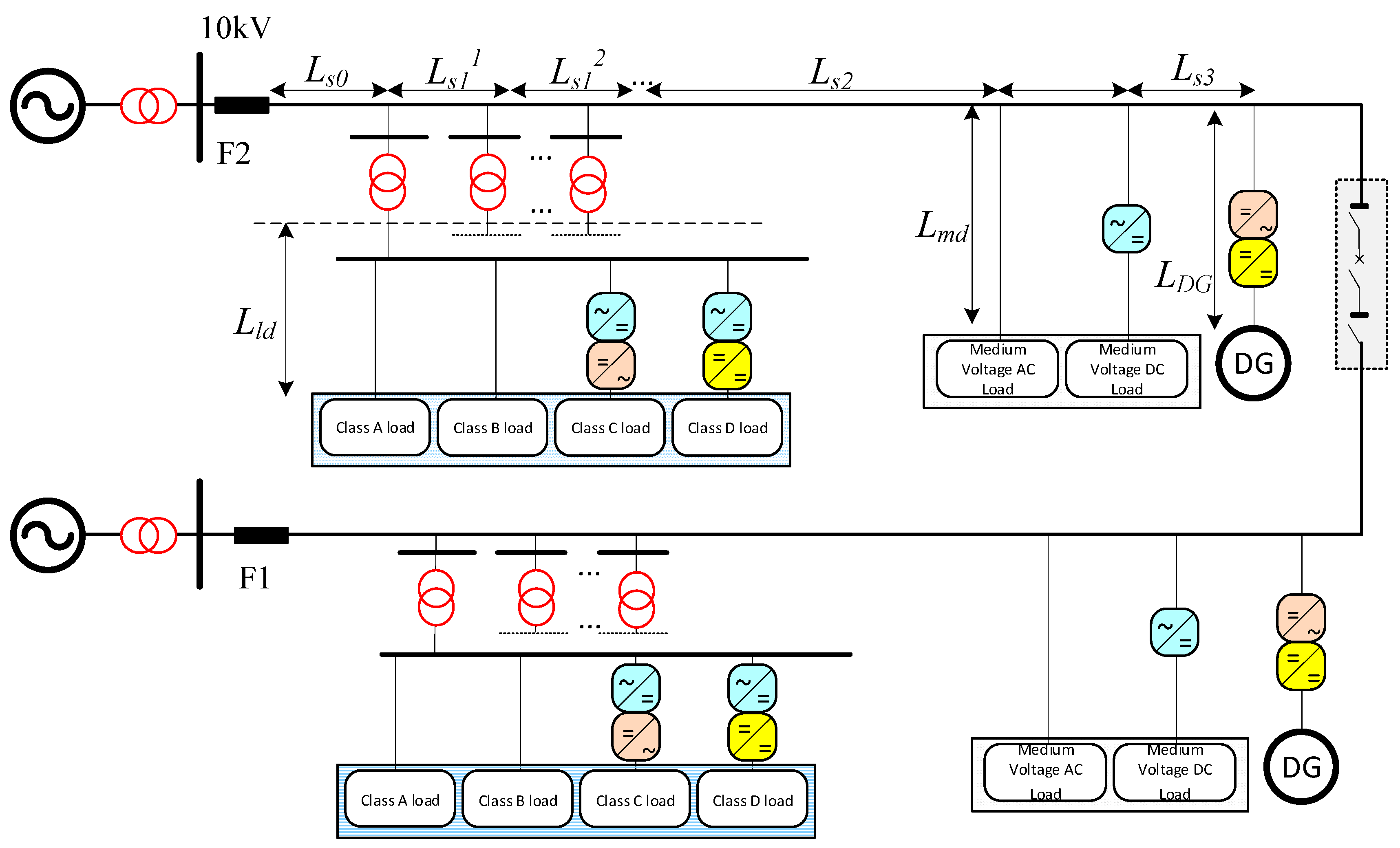
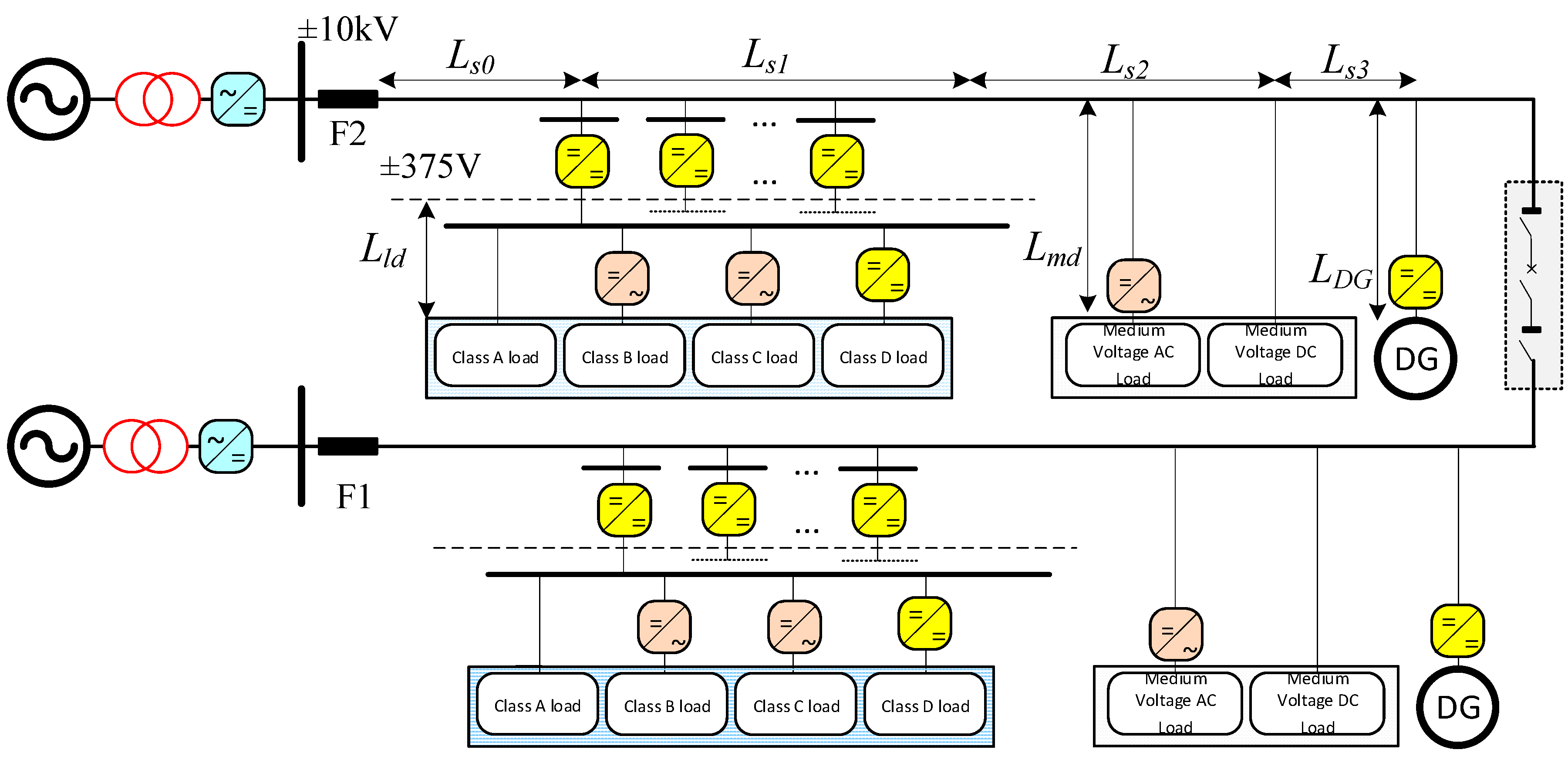
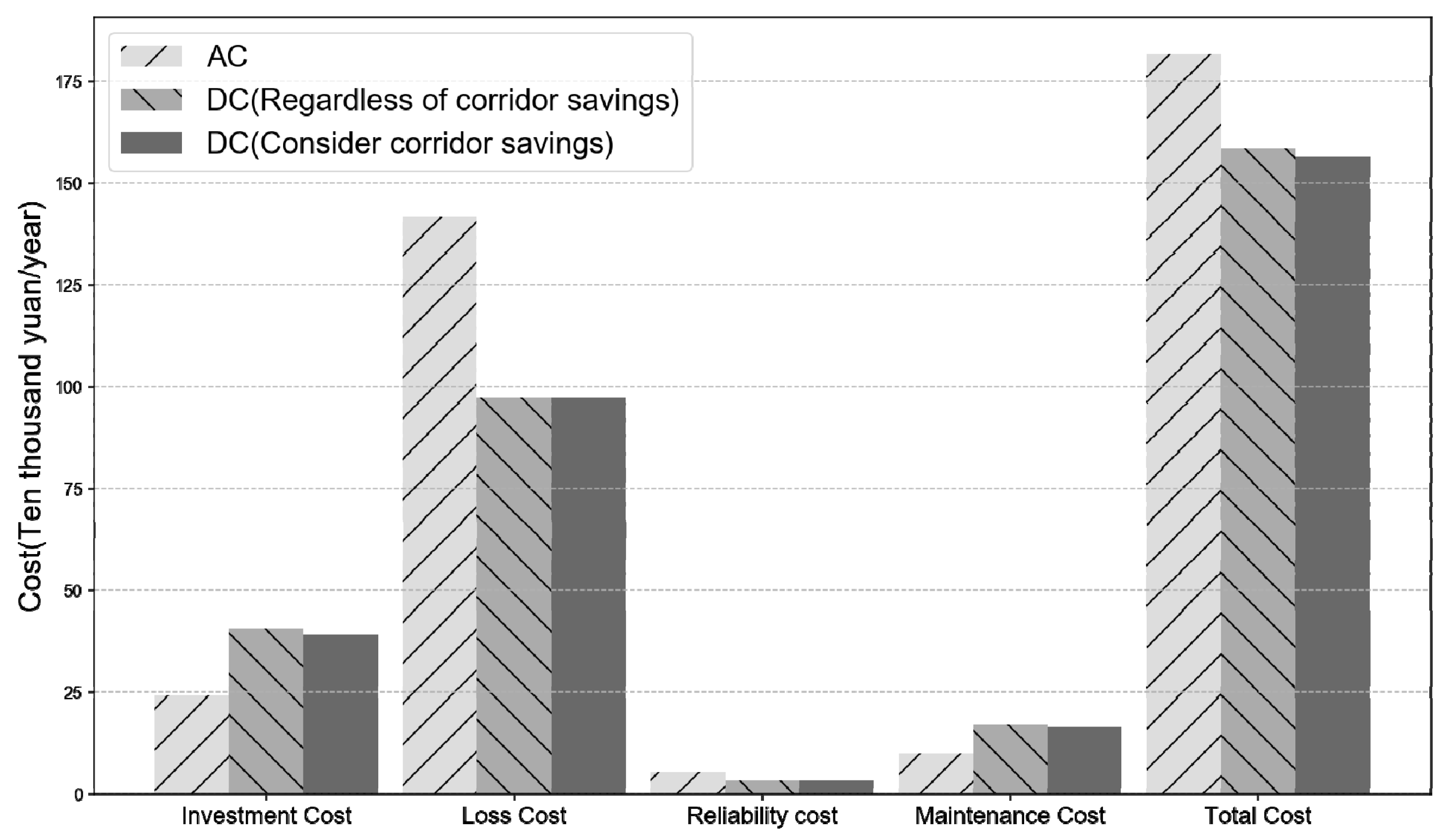
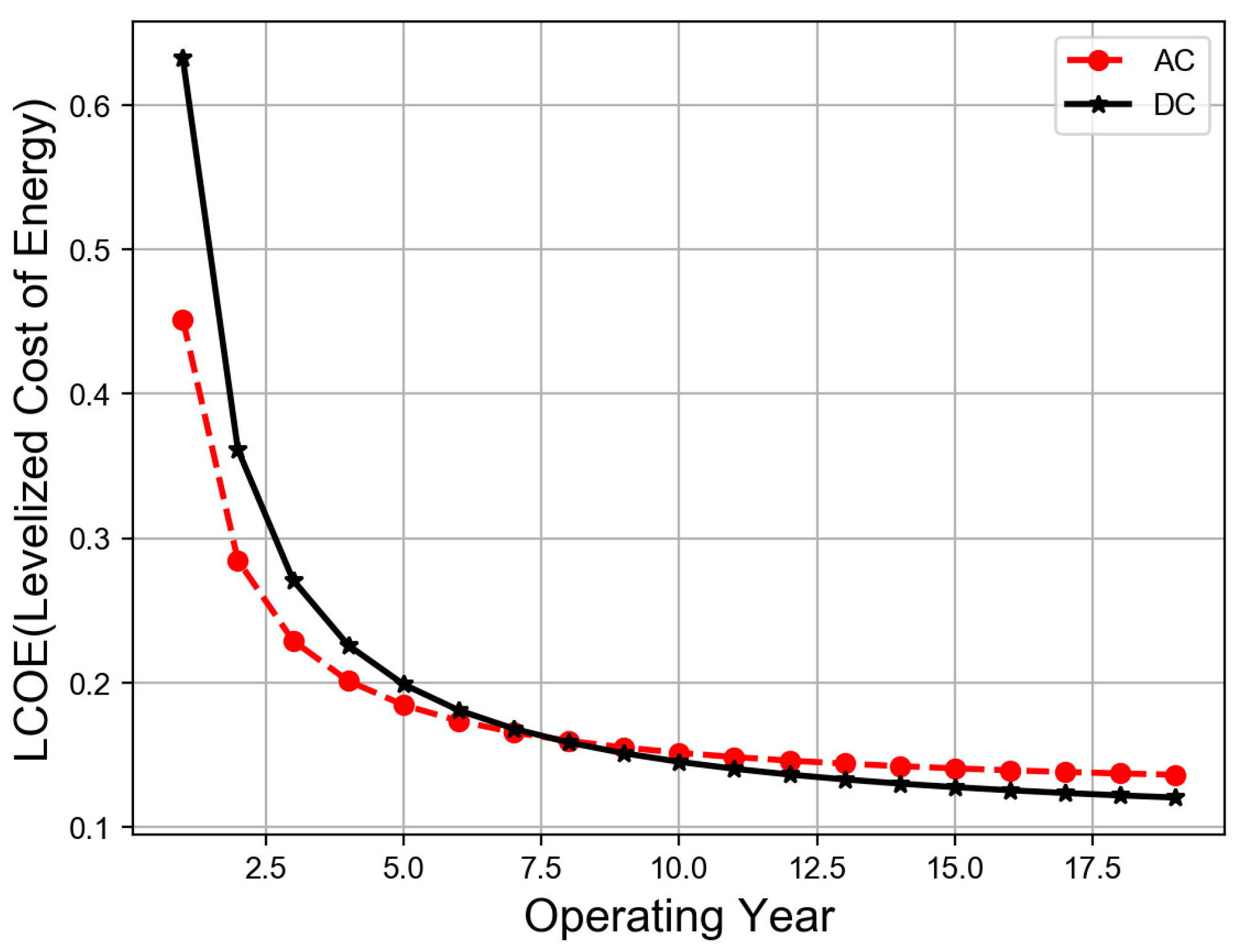
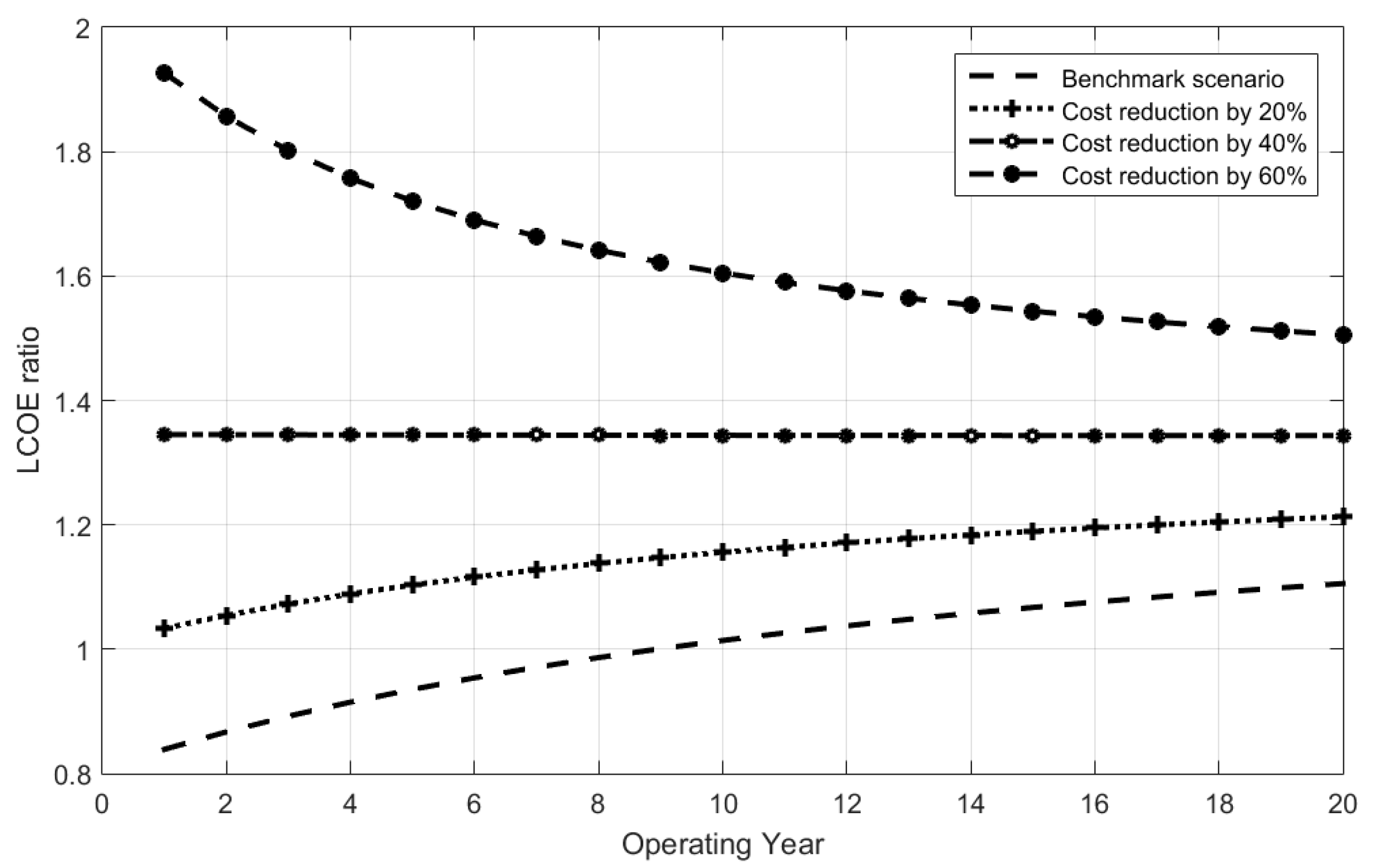
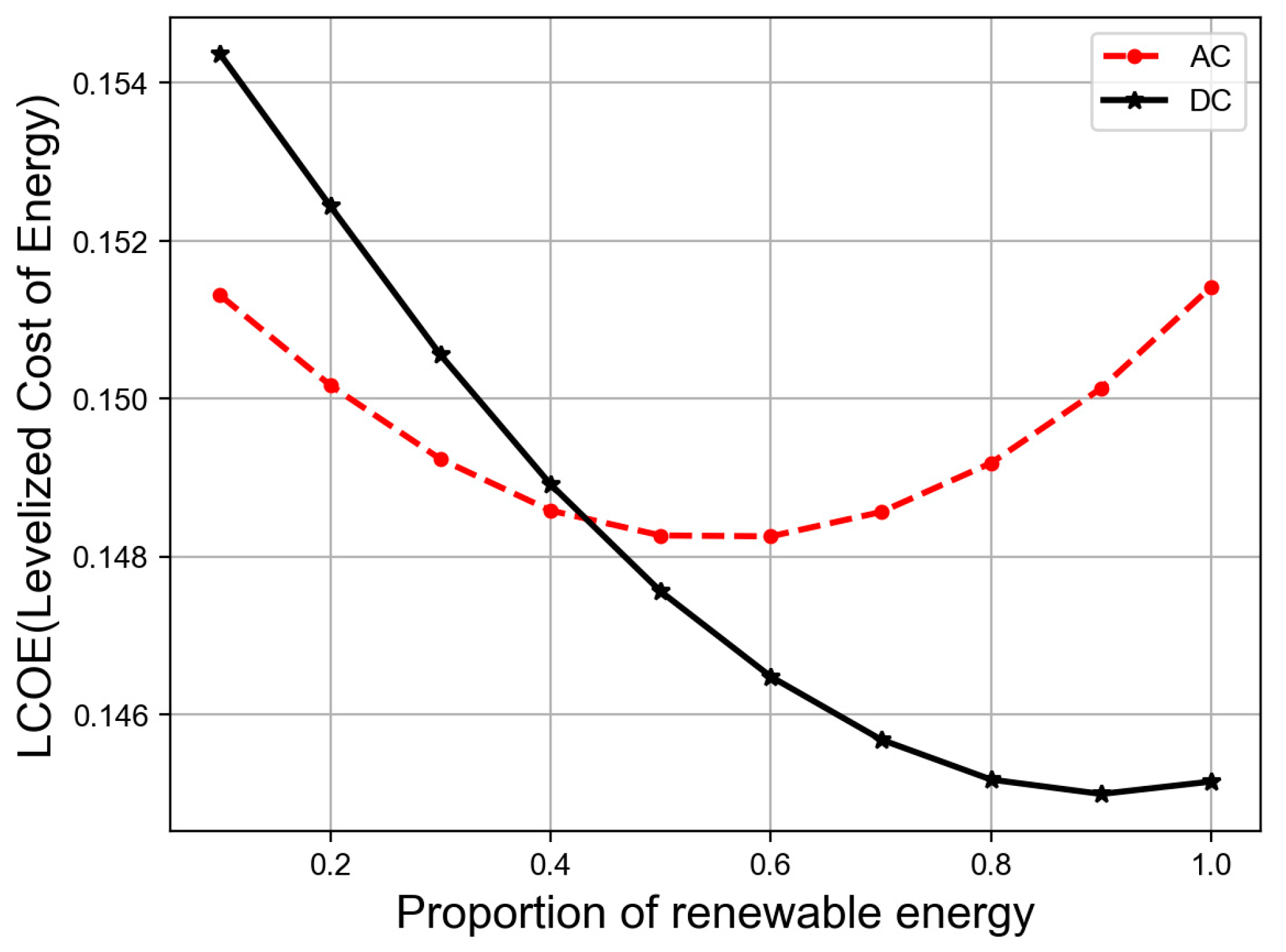

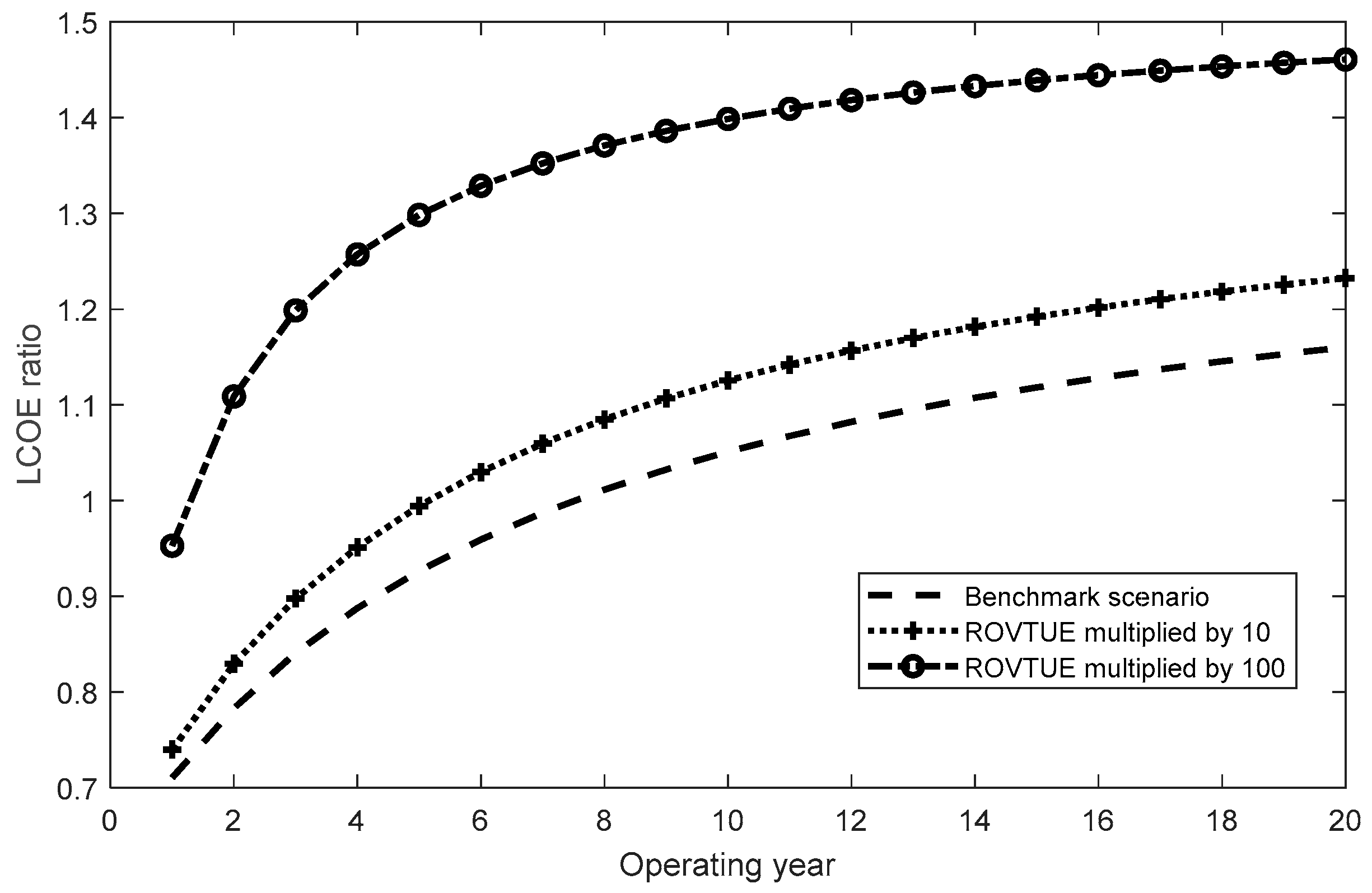
| Medium Voltage | Low Voltage | |
|---|---|---|
| AC | 10 kV | 380 V |
| DC | ±10 kV | ±375 V 48 V |
| Type | AC Distribution Network | DC Distribution Network |
|---|---|---|
| Medium-voltage AC load | Direct interconnection | DC/AC |
| Medium-voltage DC load | AC/DC | Direct interconnection |
| Class A load | Direct interconnection | Direct interconnection |
| Class B load | Direct interconnection | DC/AC |
| Class C load | AC/DC + DC/AC | DC/AC |
| Class D load | AC/DC + DC/DC | DC/DC |
| Low-voltage distributed power supply | DC/DC (photovoltaic, energy storage) or AC/DC (wind power) + DC/AC | DC/DC (photovoltaic, energy storage) or AC/DC (wind power) |
| Medium-voltage distributed power supply | DC/DC (photovoltaic, energy storage) or AC/DC (wind power) + DC/AC | DC/DC (photovoltaic, energy storage) or AC/DC (wind power) |
| Distribution Network Type | Device Type | Voltage Level |
|---|---|---|
| AC distribution network | Substation | 110 kV AC/10 kV AC |
| Distributed generation grid-connected inverter | DC/DC, DC/AC | |
| AC breaker | 10 kV AC | |
| AC cable | 10 kV AC, 0.4 kV AC | |
| Medium-voltage rectifier | 10 kV AC/±10 kV DC | |
| DC distribution network | Converter station (including AC substation) | 110 kV AC/10 kV AC/±10 kV DC |
| Direct current transformer | 10/0.7 5kV(DC/DC) | |
| DC circuit breaker | ±10 kV DC | |
| Direct current cable | ±10 kV DC | |
| Inverter | ±10 kV DC/10 kV AC | |
| Distributed generation grid-connected converter | DC/DC |
| Line Type | Length | Quantity |
|---|---|---|
| LS0 | 2 km | 1 |
| LS1 | 2 km | 1 |
| LS2 | 2 km | 1 |
| LS3 | 2 km | 1 |
| Lld | 0.02 km | 4 |
| Lmd | 0.05 km | 2 |
| LDG | 0.2 km | 1 |
| Attribute | AC Distribution Grid | DC Distribution Grid | ||||
|---|---|---|---|---|---|---|
| Equipment | Voltage | Unit price (10,000 RMB) | Quantity | Total price (10,000 RMB) | Quantity | Total price (10,000 RMB) |
| Substation | 110/10 kV | 20/MW | 6 MW | 120 | 6 MW | 120 |
| Convertor station | 110/10 kV | 50/MW | -- | -- | 6 MW | 480 |
| AC transformer | 10/0.4 kV | 10/MW | 3 MW | 30 | -- | -- |
| Direct current transformer | 10/0.75 kV | 50/MW | 1 MW | 50 | 4 MW | 200 |
| Inverter | 10 kV | 65/MW | 1 MW | 65 | 1.5 MW | 97.5 |
| Rectifier | 10 kV | 65/MW | 1.5 MW | 97.5 | -- | -- |
| AC breaker | 10 kV | 2/set | 3 sets | 6 | -- | -- |
| DC circuit breaker | ±10 kV | 60/set | 3 | 180 | ||
| AC cable | 10 kV | 20/km | 4.2 | 84 | -- | -- |
| 380 V | 10/km | 0.18 | 1.8 | -- | -- | |
| Direct current cable | ±10 kV | 20/km | 4.2 | 84 | ||
| ±375 V | 10/km | 0.18 | 1.8 | |||
| Corridor cost | 7/km | 150 | 1050 | 100 | 700 | |
| Total | 1504.3 | 1863.3 | ||||
© 2019 by the authors. Licensee MDPI, Basel, Switzerland. This article is an open access article distributed under the terms and conditions of the Creative Commons Attribution (CC BY) license (http://creativecommons.org/licenses/by/4.0/).
Share and Cite
Liu, Y.; Yu, Z.; Li, H.; Zeng, R. The LCOE-Indicator-Based Comprehensive Economic Comparison between AC and DC Power Distribution Networks with High Penetration of Renewable Energy. Energies 2019, 12, 4621. https://doi.org/10.3390/en12244621
Liu Y, Yu Z, Li H, Zeng R. The LCOE-Indicator-Based Comprehensive Economic Comparison between AC and DC Power Distribution Networks with High Penetration of Renewable Energy. Energies. 2019; 12(24):4621. https://doi.org/10.3390/en12244621
Chicago/Turabian StyleLiu, Yi, Zhanqing Yu, Haibo Li, and Rong Zeng. 2019. "The LCOE-Indicator-Based Comprehensive Economic Comparison between AC and DC Power Distribution Networks with High Penetration of Renewable Energy" Energies 12, no. 24: 4621. https://doi.org/10.3390/en12244621
APA StyleLiu, Y., Yu, Z., Li, H., & Zeng, R. (2019). The LCOE-Indicator-Based Comprehensive Economic Comparison between AC and DC Power Distribution Networks with High Penetration of Renewable Energy. Energies, 12(24), 4621. https://doi.org/10.3390/en12244621





